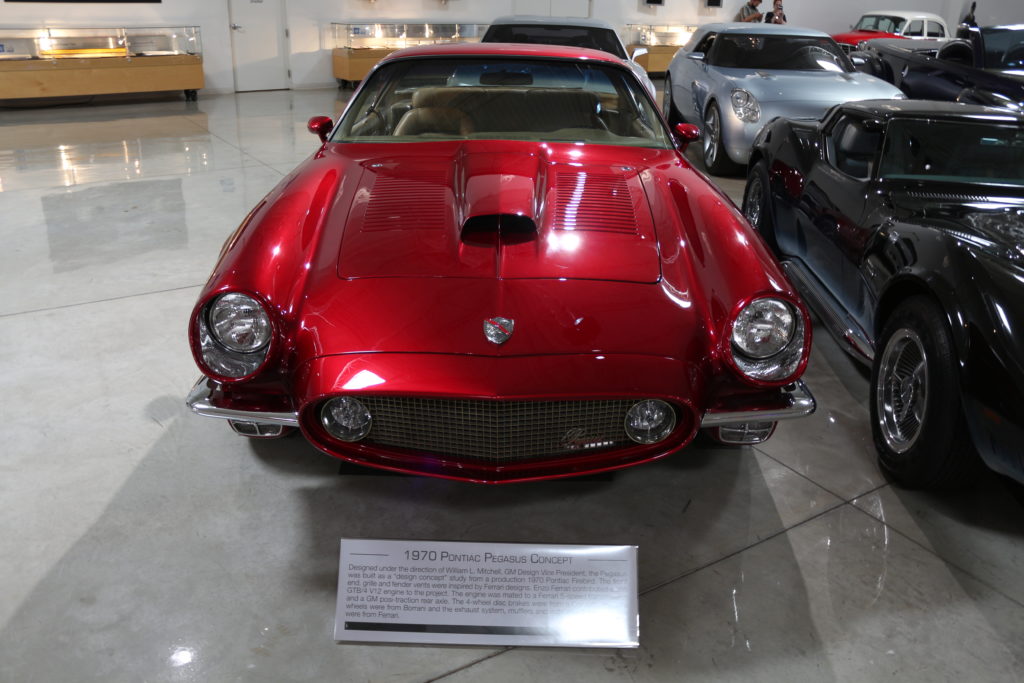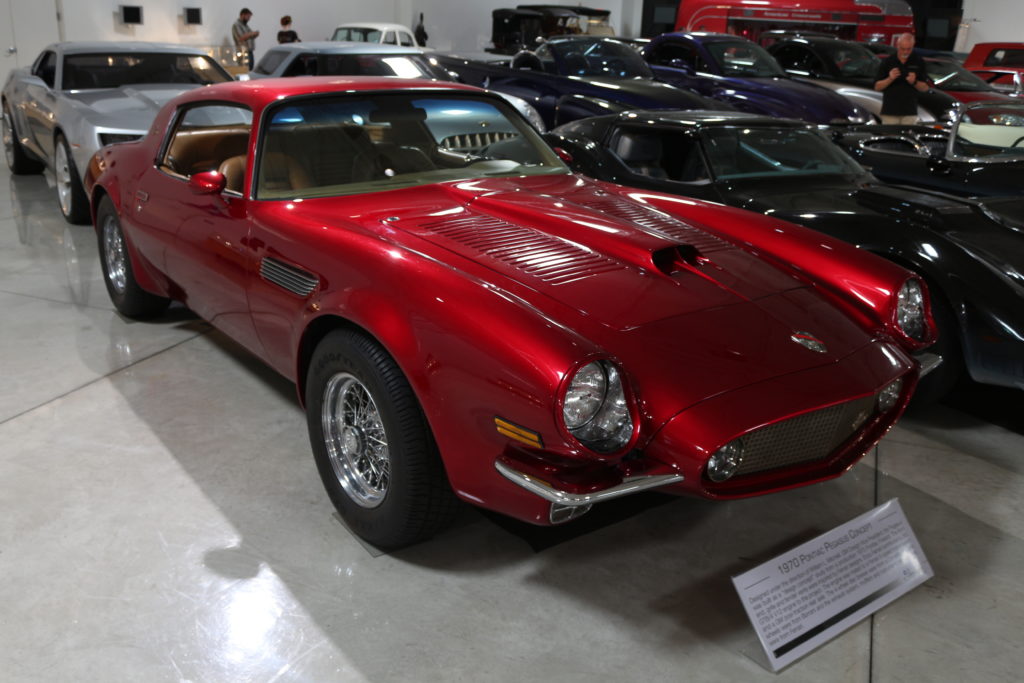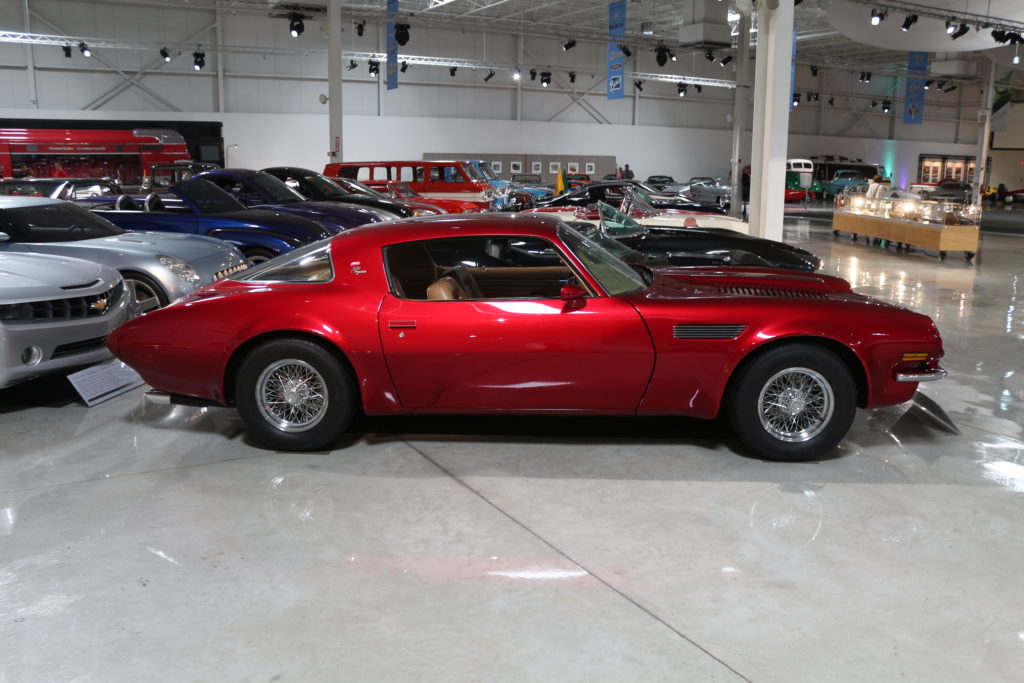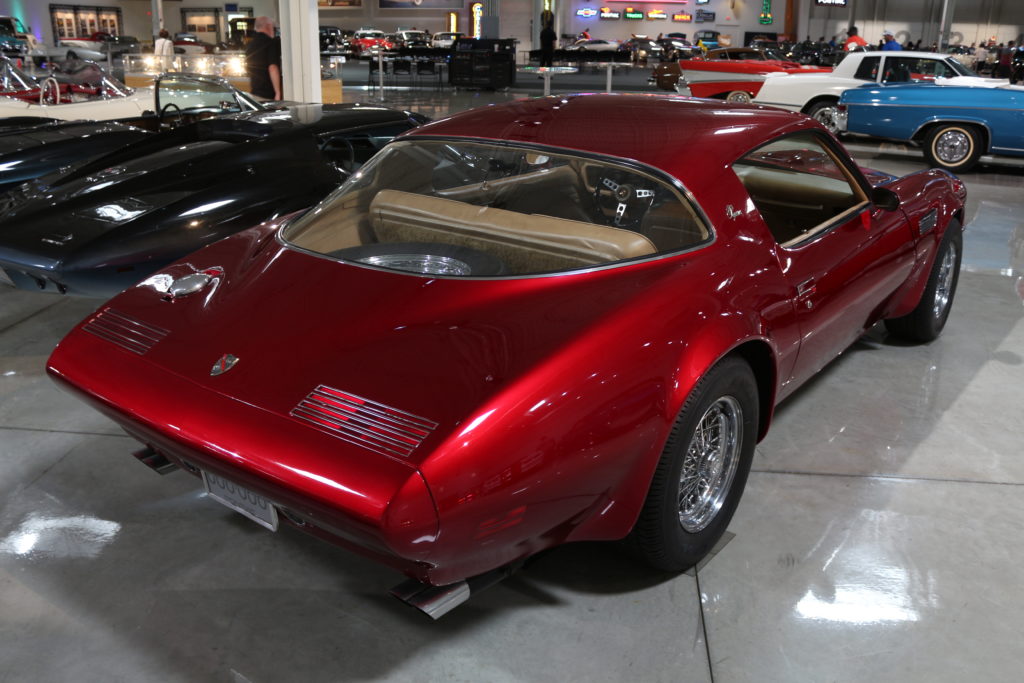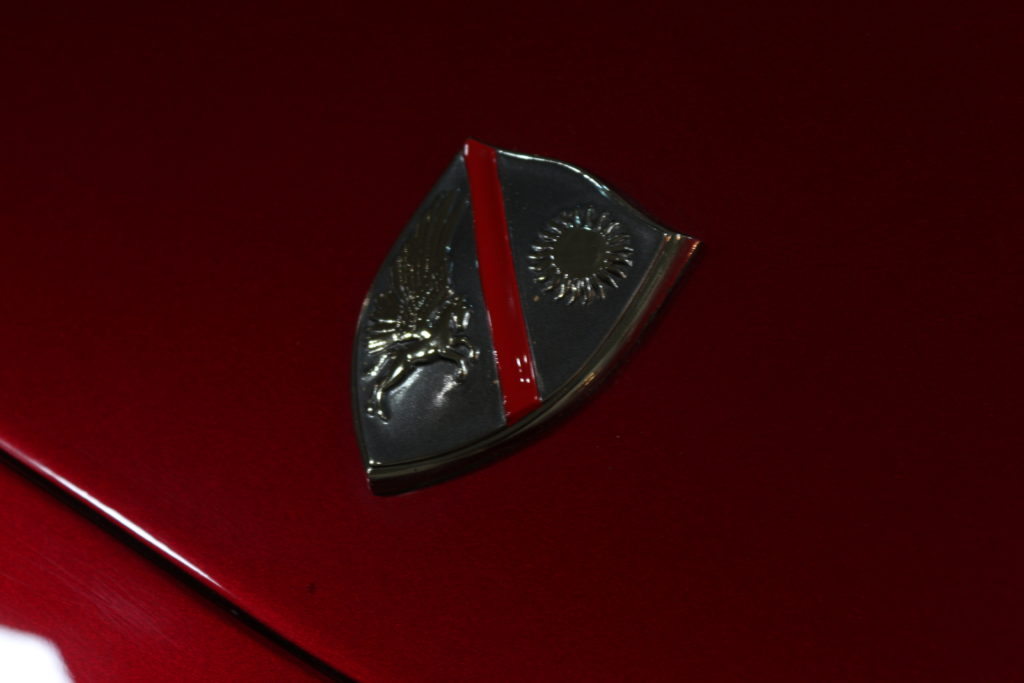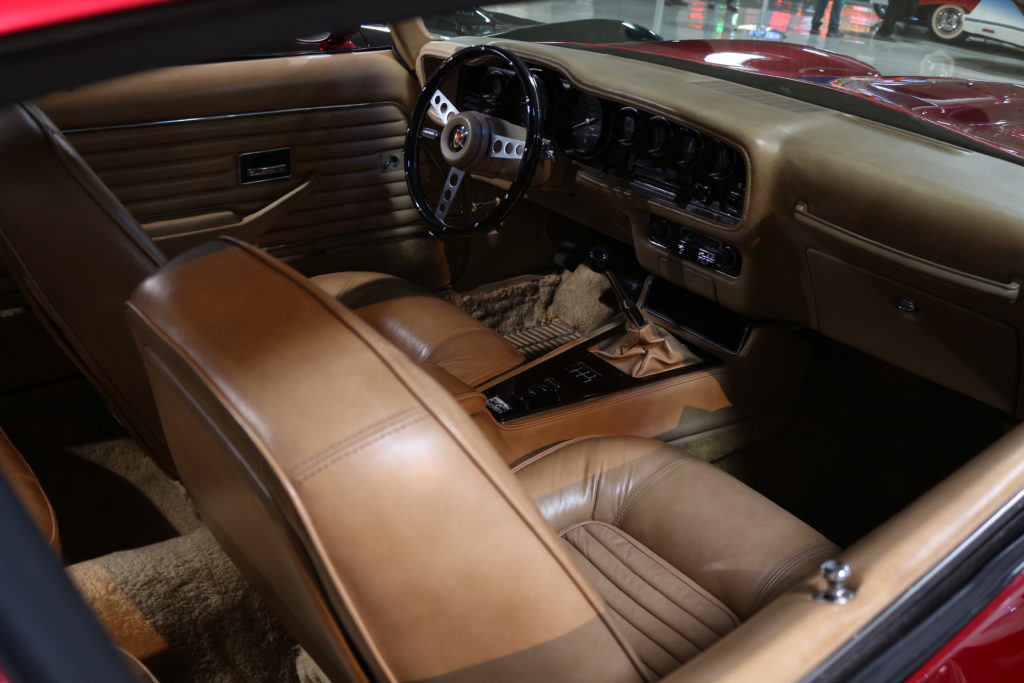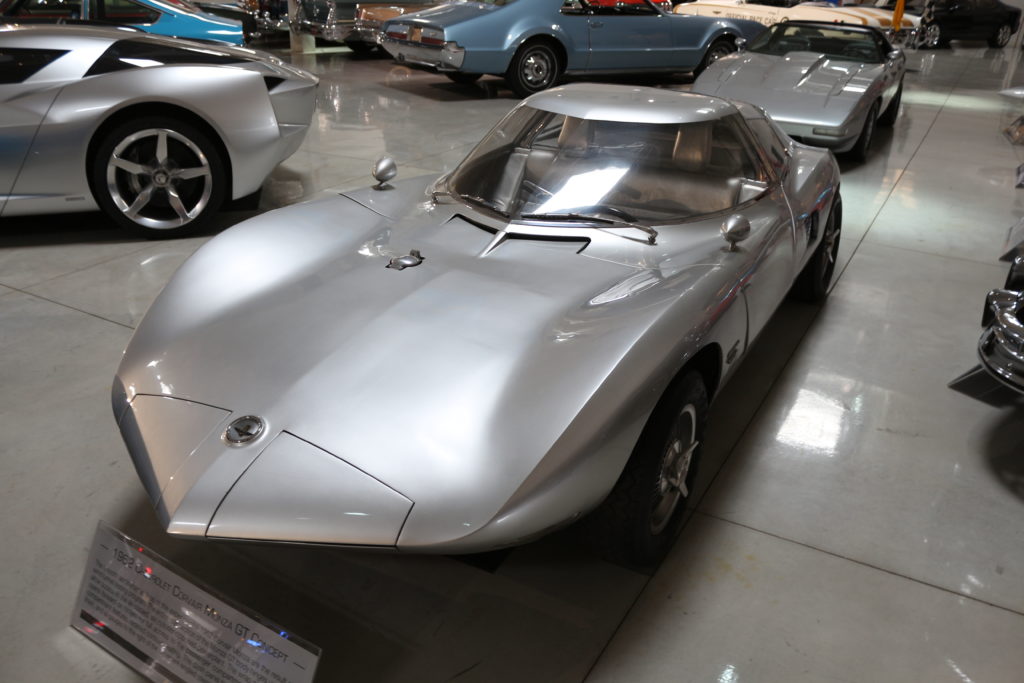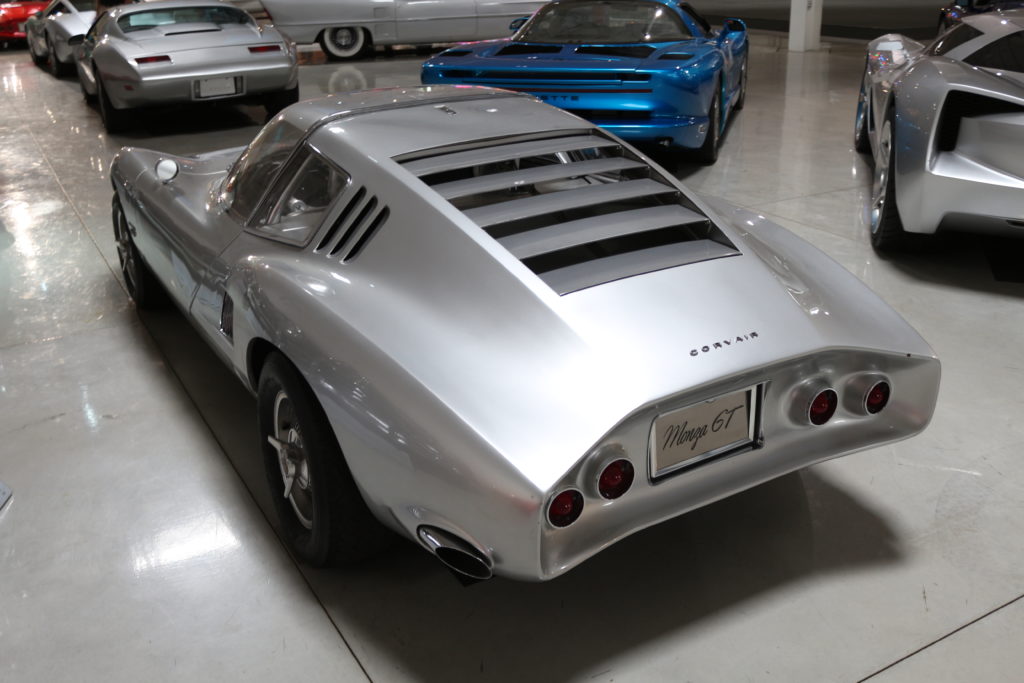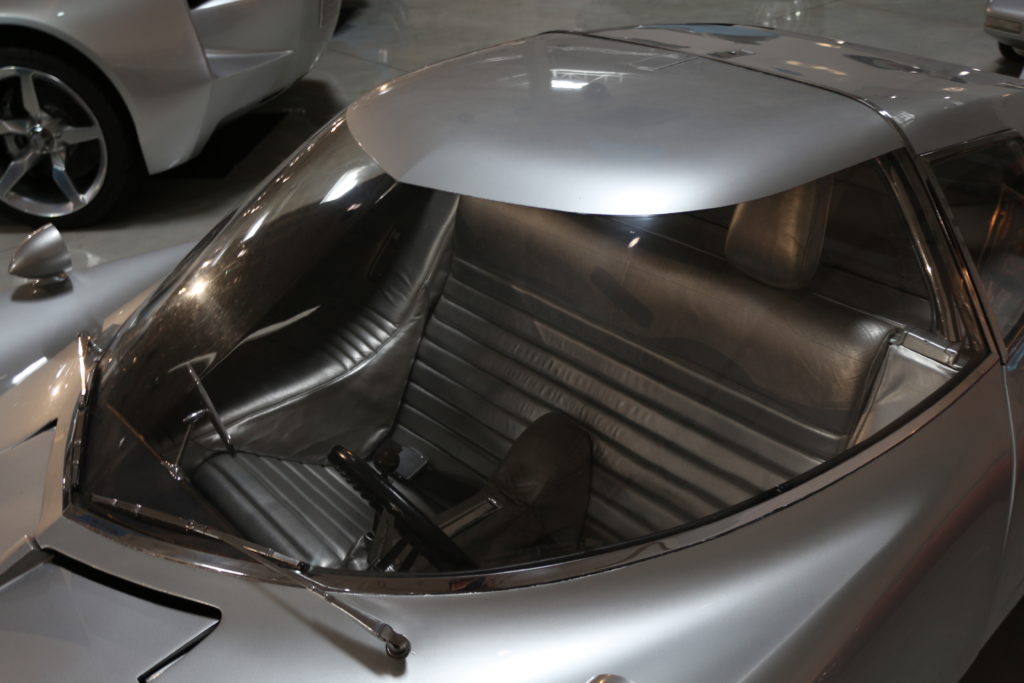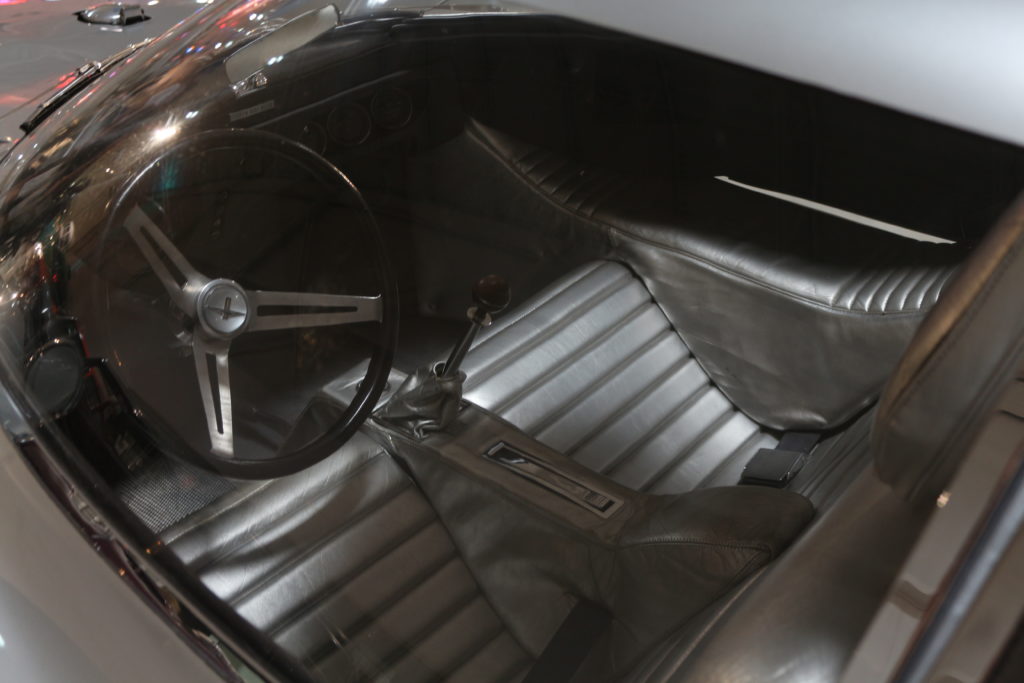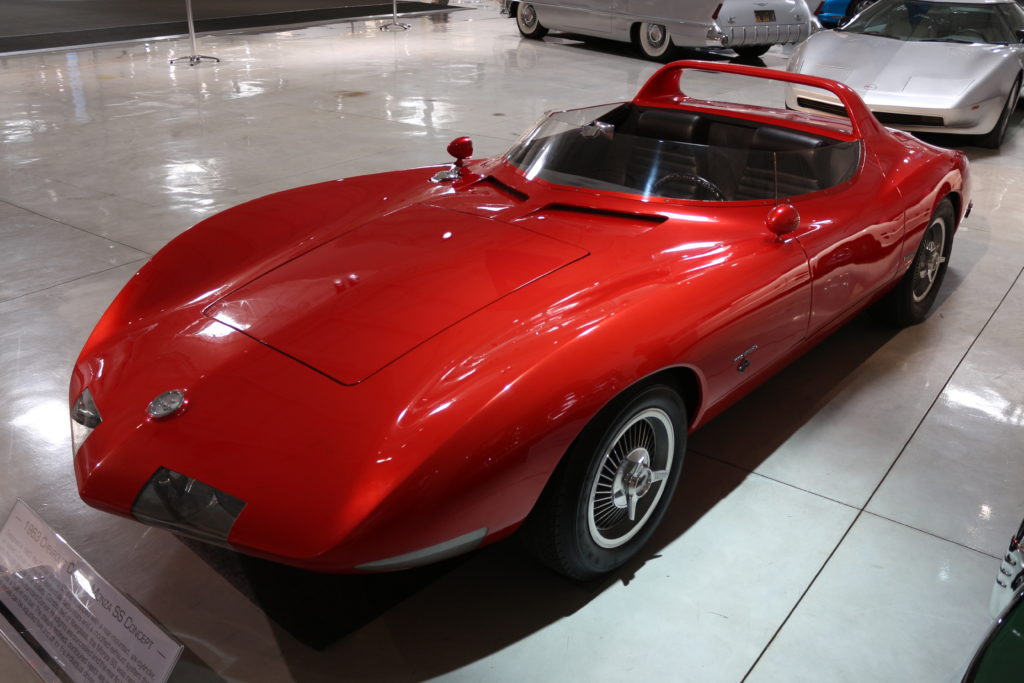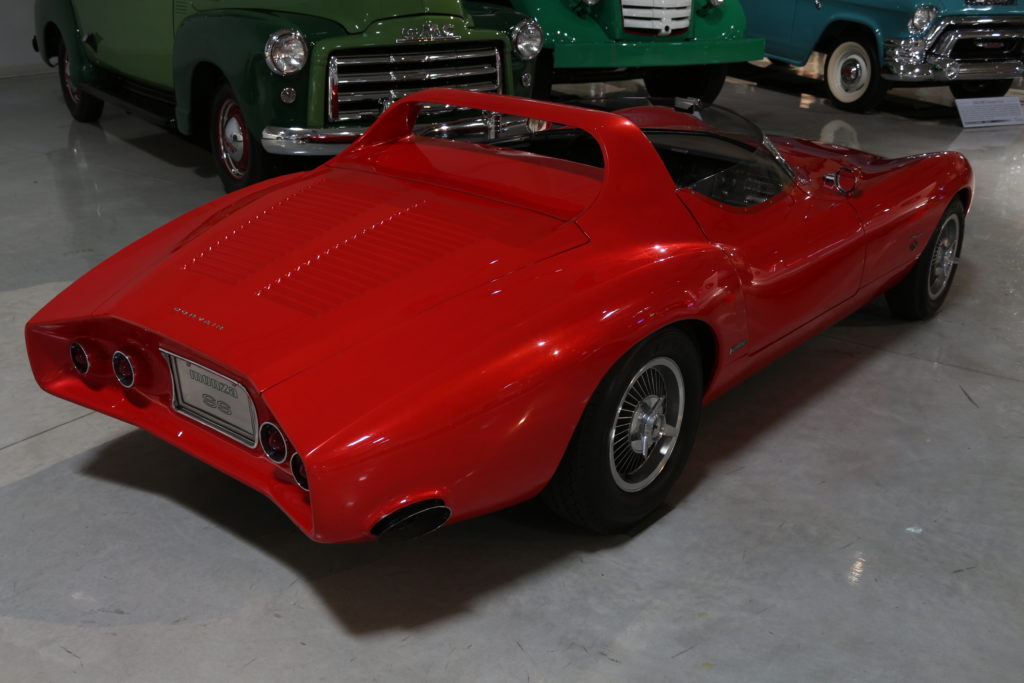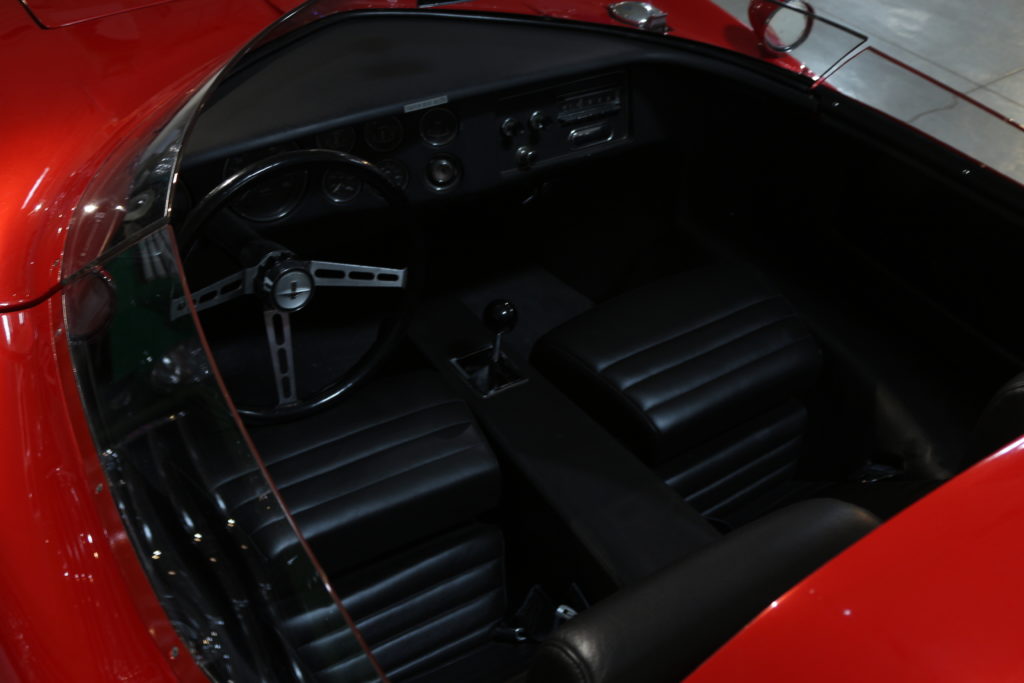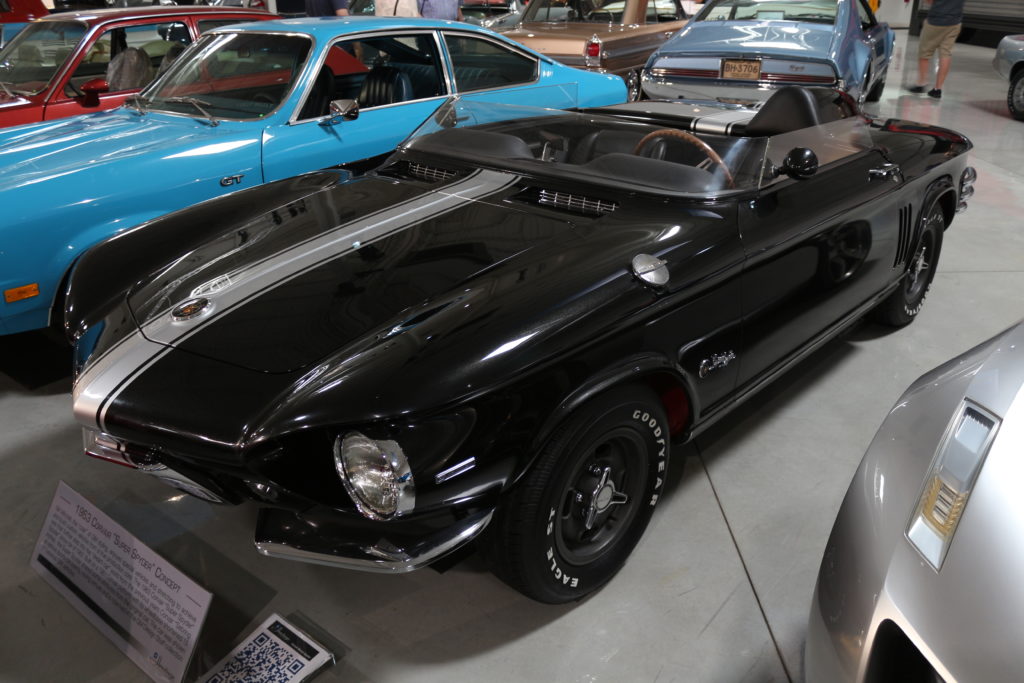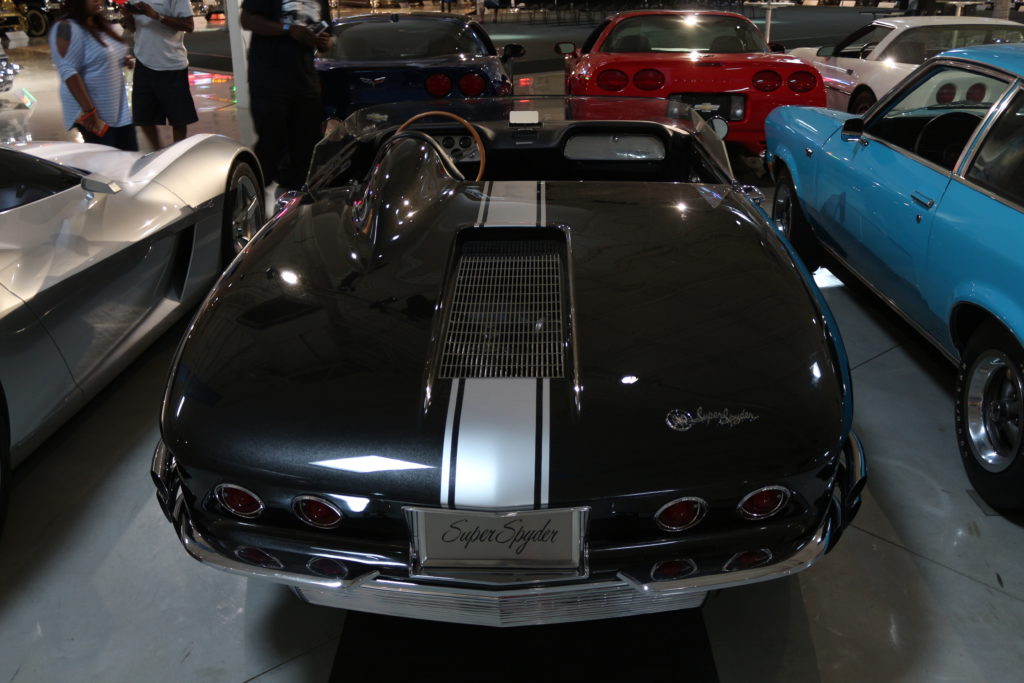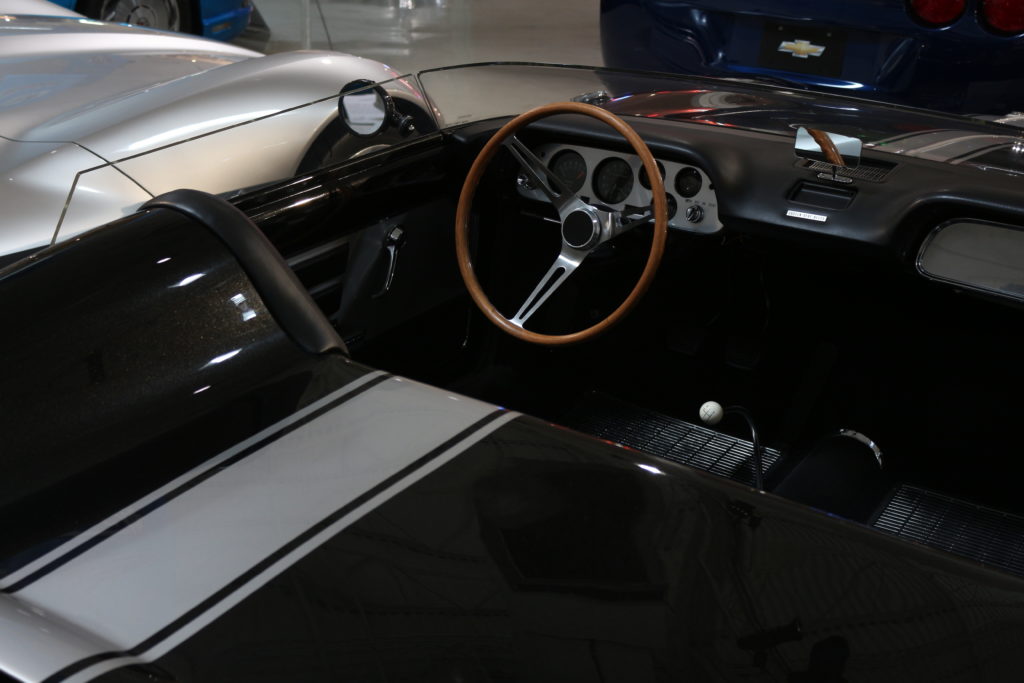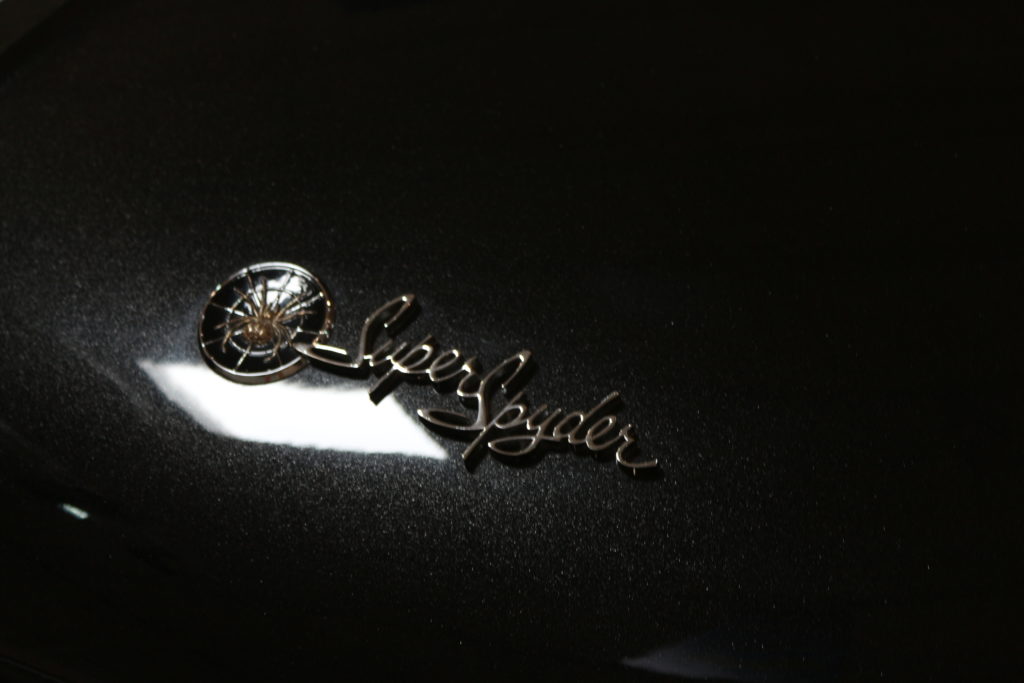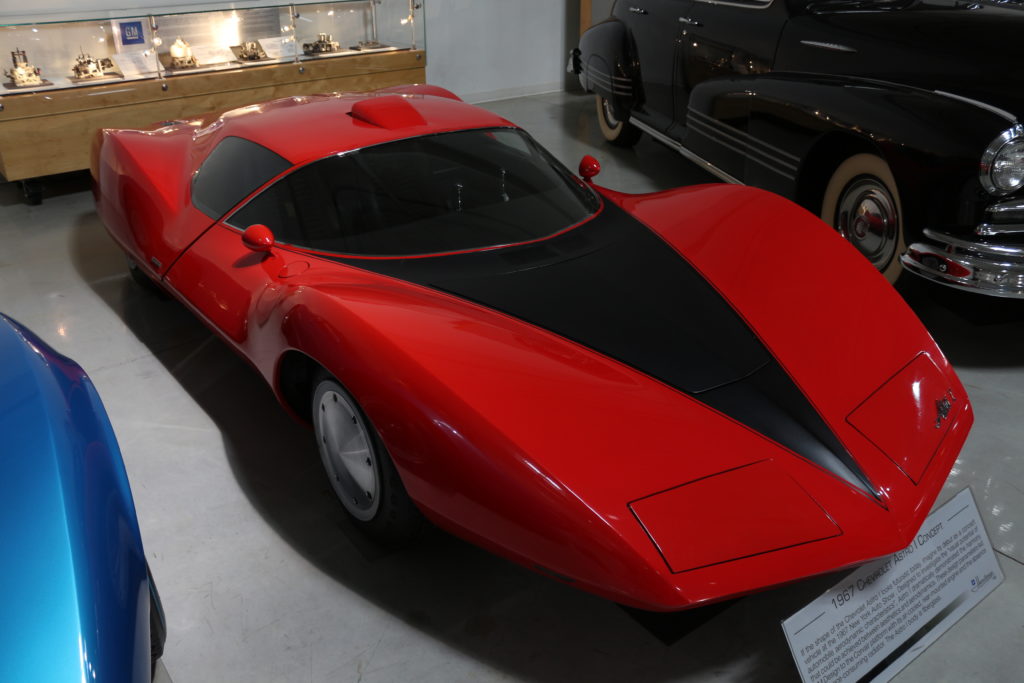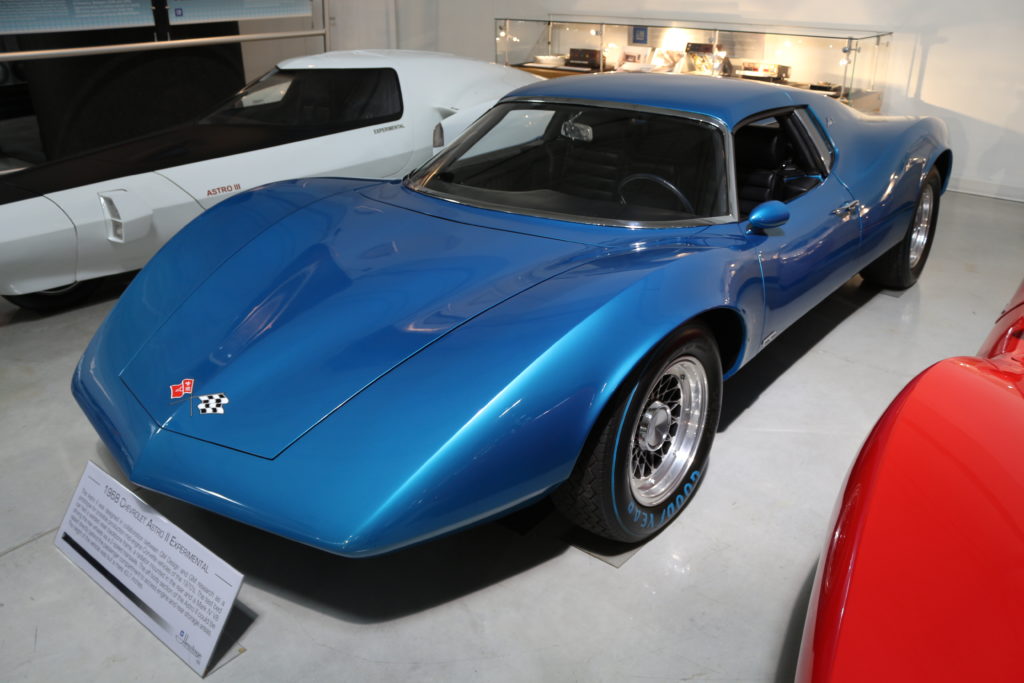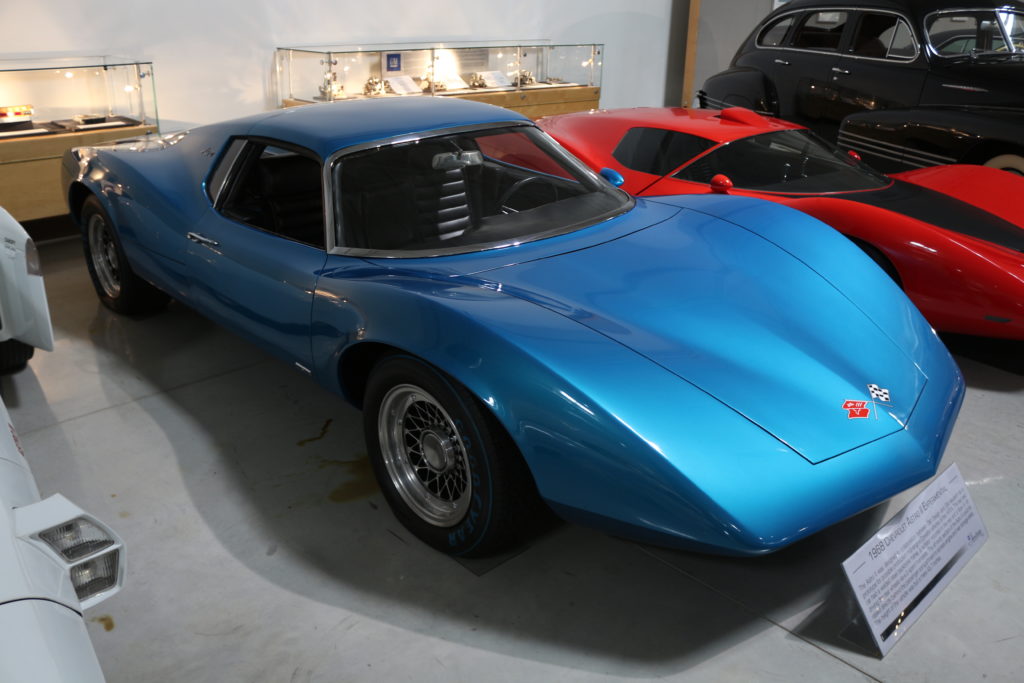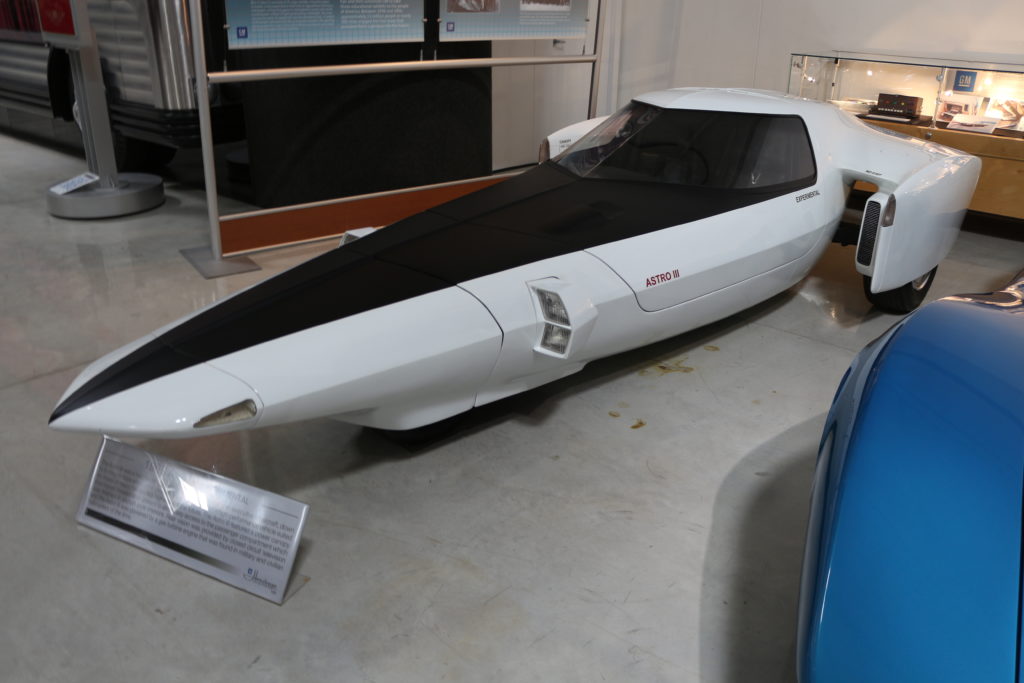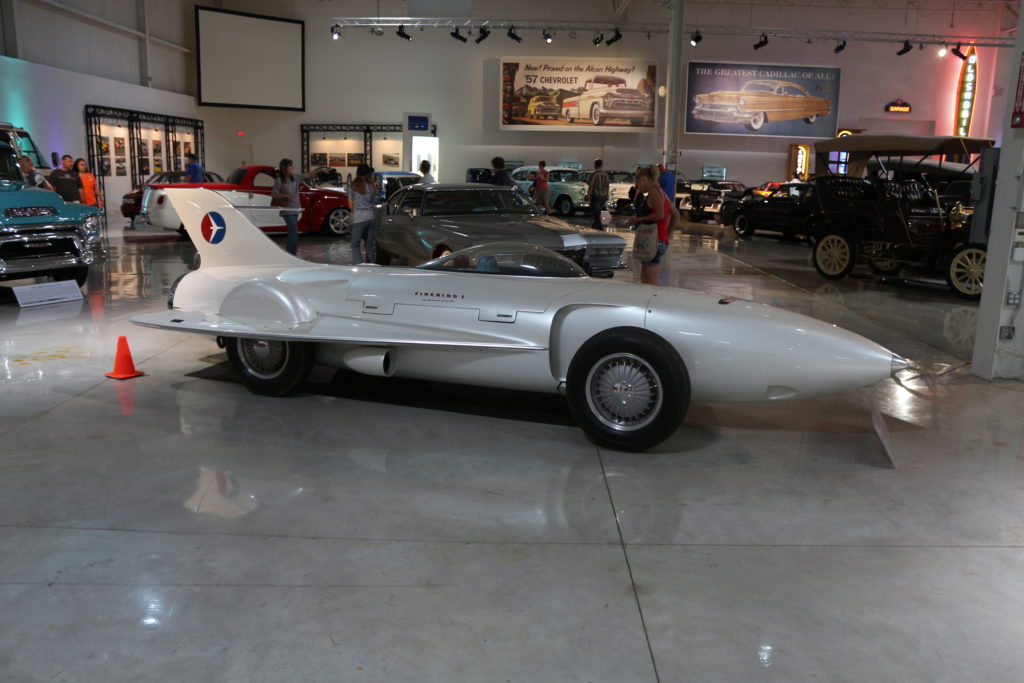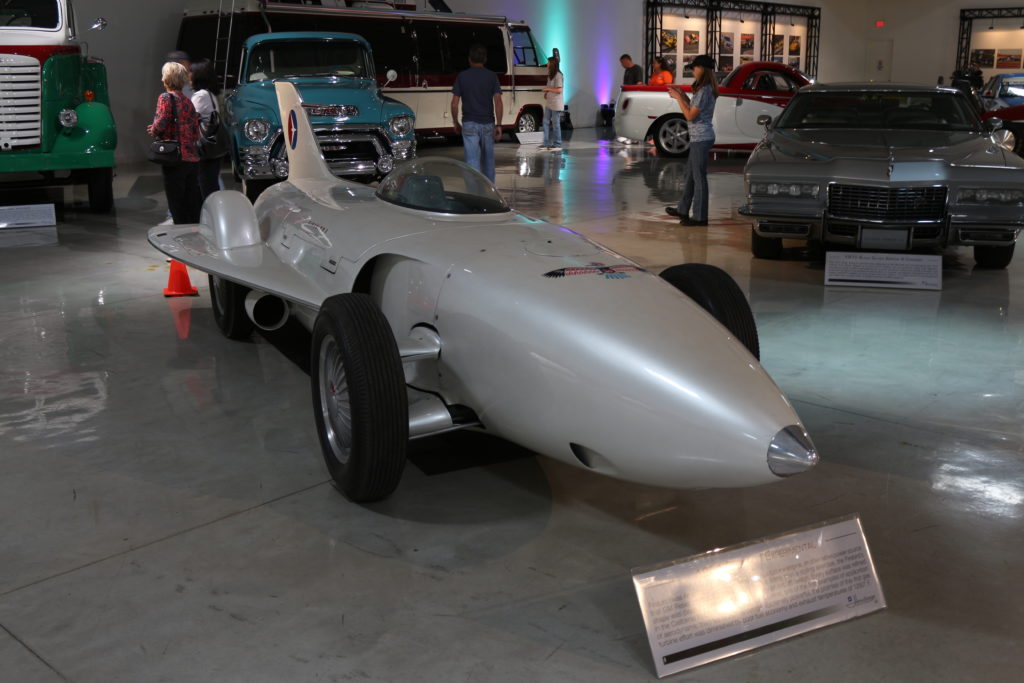General Motors Long-held Fascination with European Sports Cars: GM Heritage Center

This classic Ferrari seems a bit out of place in General Motors’ Heritage Center.
On the surface of things, I would agree with you. However, lean in real close, I am going to let you in on a little secret: that’s a Pontiac. Specifically, we are looking at a 1970 Pontiac Firebird. No really, it is, squint your eyes and you can see it. Dubbed the Pontiac Pegasus, this concept uses Firebird underpinnings to suspend a uniquely European take on the grand touring coupe. It’s more than just skin deep, as this concept has been bestowed a Ferrari powertrain: specifically, the 4.4L Columbo V12 from a 365 GTB/4, mated to a Ferrari 5-speed manual transmission and GM PosiTrac rear end. It has also been given the 4-wheel disc brakes from a contemporary Corvette, Borrani wire wheels and many other styling cues taken directly from Ferrari.
[Click on the images for full-size resolution.]
It’s stunning, better looking in my opinion than the Ferrari from which it was cribbed. Similarly, the interior is leather-bound and decidedly European in style. Check out the “Pegasus” ornamentation on the car, as well. Though, with that said, the 3/4 angle (Image #4) clearly gives away the Firebird bones from which this was built. General Motors concepts seem to continuously tease the idea of new sub-brands spawned off to do their own thing. It’s a recurring theme, just take note of that.
The Chevrolet Corvair has been the victim of circumstance, and Al Gore, to be honest, but there was a period of time where General Motors believed that Corvair was the future for Chevy. With its rear-engine layout it offered excellent packaging and interior volume, as well as handling dynamics that rivaled its European contemporaries. Being an air-cooled engine further simplified the car’s packaging and serviceability. The name was spread across a large range of vehicles, including coupes, sedans, vans, trucks, it really was poised to be something special, and unique, in the American market.
However, here is a Corvair you may not be familiar with.
[Click on the images for full-size resolution.]
This is the 1962 Corvair Monza GT concept. This mid-engine, rear-wheel drive concept is so beautifully proportioned that my jaw literally dropped when I saw it. Accentuating the proportion is the fact that the Corvair Monza GT is so small in dimension. It has an air of delicacy about it that American production cars never could replicate. If parked next to a Jaguar XJ13 concept, you would be astounded by the similarity, then further astounded, perhaps to the point of shock, to learn that the Chevy came a whole four years before the European Jag.
Of course, that front end unmistakably found its way onto the C3 Corvette six years later, but the C3 lacked the delicacy and outright beauty in design of the Corvair Monza GT. I am unable to point to any one piece of this car and proclaim it to be outright beautiful, however, when taken in, as a whole, it is undeniably one of prettiest cars I have ever seen.
It’s time now to look at the sister car to the Corvair Monza GT, the Monza SS. Penned less than a year after the GT, the SS represented a slightly different interpretation of the same basic package. These cars shared the same Corvair engine, an air-cooled flat six, however, while the GT was mid-engine, the SS was rear-engine, like the standard Corvair. This allowed for a slightly smaller wheelbase and larger overhangs for styling purposes. The Monza SS is listed as being 16 inches shorter than a regular Corvair.
[Click on the images for full-size resolution.]
It is equally tidy in overall dimension compared to it’s GT sibling, but is lacking in outright beauty. The large overhangs seem comically overwrought in such a small package. The increased overhangs were, hopefully, crude attempts at improved the aerodynamic profile of the cars. While neither car would be considered aerodynamic success compared to modern cars, one has to wonder about the roll hoop on the SS. As per GM, it is stated to be a functional roll bar. However, it draws comparison to the fake “style bars” seen in some roadsters, rather than an effective aerodynamic design or safety element.
Debuted simultaneously was the Corvair Super Spyder. Again, the European influence here is substantial, this could pass as the butch cousin of a Porsche 356 Speedster, or Lotus 11. The Super Spyder took a conventional Corvair convertible and lopped 15 inches of wheelbase out of it. From there, the aggressively chiseled front and rear ends gave it a very racey look. The air-cooled, rear-engine layout and Corvair powertrain remained unchanged for the SS. Curiously, the Super Spyder is listed as being the largest of the three Corvariants (brutal pun intended) we have just talked about. Though, in person, it seems a damn sight smaller than the Monza SS. Those long overhangs play tricks on the eyes, it seems.
[Click on the images for full-size resolution.]
The reign of the Corvair came to an unceremonious repose. Safety advocated Ralph Nader saw to it that General Motors was pressured into giving the Corvair name an early respite. Though, market forces, beyond the control of a single man from Connecticut, were also at play. 1965 saw the introduction of the Ford Mustang, a massive sales success. Though the second generation Corvair platform had just launched, the writing was on the wall. General Motors saw opportunity in a similar car, one that used conventional engines, chassis design and assembly. Within two years, the Camaro hit the market, taking over the role of the Chevy sports car, and two years after that, the Corvair line was gone forever.
While the Camaro represented a massive shift towards a distinctly American sporting car design, GM wasn’t done indulging it’s European fascination. Nor was the company putting a halt on it’s study of aerodynamics. Here are exhibit #1 and exhibit #2, designed during this transitional period.
[Click on the images for full-size resolution.]
On the left, the 1967 Chevrolet Astro I Experimental. Notice the massive overhangs and minimized frontal area. This streamlined design came to fruition just before the Corvair line went bust. As a result, it features Corvair underpinnings beneath the very stylized, curvy body. Astro I was a design study attempting to merge aesthetic and aerodynamic principle. Though exaggerated, the front clip, and especially those headlight covers certainly look like the then-in-development C3 Corvette. Of course, Astro I featured fiberglass composite body panels, also like the Corvette.
Beside Astro I Experimental is the very cleverly named Astro II Experimental. These two concept cars show the heavy swing in focus at General Motors. The proportions were heavily toned down, and Astro II has a different stance to it. On design alone, it could pass as being front or mid-engine, but certainly not rear-engine. Additionally, gone is the air-cooled six pot, and in it’s place resides a water-cooled Small Block V8. That said, it looks very European, and to my eyes, Italian. Coming full circle, it looks like a Ferrari, perhaps a Dino 246 GTS?
There were several other Experimentals, but they deviated too far from the plot. Indeed, they were hardly cars at all, more like aircraft with the wheels stuck in the down position. Though, that said, Astro III is not entirely unlike the now-defunct DeltaWing, so maybe the boys from Detroit were on to something all those years ago…
[Click on the images for full-size resolution.]
So, before GM became fascinated with Germany’s Nurburgring, and setting lap times around the ‘Ring, they had a different fascination with Europe. To understand the virtues of Europe’s finest cars, General Motors set out to build their own. Whether this was to expand their market share, or an attempt to bring something unique to American audiences, we may never know. The funny thing is, the heavily European-inspired concepts don’t die off in the ’70’s. No, in fact, they kept right on going. Look at what Cadillac has become now: the American answer to the Germans.
Has another common trend emerged for you yet? General Motors has long flirted with designing an outright European-styled sports car, one that is mid-engine. Corvettes, since their inception have been tested in the configuration. With the rumor mill surrounding the upcoming C8 awash with more “evidence” than ever than it will be mid-engine, it pays to look back at what GM has been experimenting with for the last 50 years. This isn’t the first mid-engine Corvette rodeo. As the Corvette brand goes increasingly upscale, it pays to look back as much as it pays to look forward.

